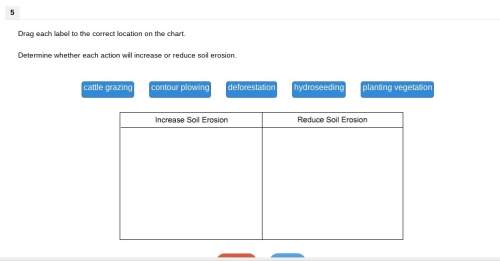
Biology, 29.07.2019 00:30 cameronchilders
Apatient has diabetes a disease that causes high blood cuter levels which macromolecule will a dietician monitor the most closely in a patient that has the disease

Answers: 1


Other questions on the subject: Biology

Biology, 21.06.2019 20:00, RealGibbon857
In sexual reproducing animals once fertilization of the egg takes place, the exists as a single cell until cell division begins. a) egg b) larva c) sperm d) zygote
Answers: 1

Biology, 22.06.2019 00:30, Likat681
What is the difference between the conducting zone and the respiratory zone of the respiratory system? the conducting zone is a series of cavities and tubes that move air to the respiratory zone where gases exchange with the bloodstream. the conducting zone exchanges gases between the lungs and the alveoli and the respiratory zone is a series of cavities and tubes that move air to the conducting zone. the conducting zone moves oxygen into the cells and the respiratory zone takes carbon dioxide away from the cells. the conducting zone moves oxygen into the bloodstream and the respiratory zone takes carbon dioxide away from the bloodstream.
Answers: 2

Biology, 22.06.2019 13:00, blesskids600
This is an active transport mechanism by which cells pump sodium and potassium ions against the concentration gradient
Answers: 1

Biology, 22.06.2019 17:30, xman839
98 points you will be galileo perform the experiment to determine if objects with different mass fall at the same, or different, rates in the air and in a vacuum. before you conduct your experiment, you need to form a hypothesis. a hypothesis is a prediction of what you think will happen in the experiment. the hypothesis is a statement that describes “if” a certain set of circumstances are present “then” there will be a specific result that will occur. record your hypothesis here: record the results from step one of the experiment (dropping the objects in the air): first trial: second trial: third trial: record the results from step two of the experiment (dropping the objects in a vacuum): first trial: second trial: third trial: did the experiment support your hypothesis? using the data from your experiment, describe why you believe your hypothesis was either proven or disproven. what forces were acting on the objects dropped in the air? what force was acting on the objects dropped in the vacuum? part two: comparing forces choose two forces and compare and contrast these forces. you must provide two ways that they are alike and two ways that they are different. you may make a list, write in paragraph form, or make a chart. choose two forces and compare and contrast these forces. these must be different forces than used in the prior question. provide two ways that they are similar and two ways that they are different. you may make a list, write it out, or make a chart.
Answers: 1
You know the right answer?
Apatient has diabetes a disease that causes high blood cuter levels which macromolecule will a dieti...
Questions in other subjects:

Biology, 27.04.2020 02:28


Chemistry, 27.04.2020 02:28



English, 27.04.2020 02:28

Chemistry, 27.04.2020 02:28






